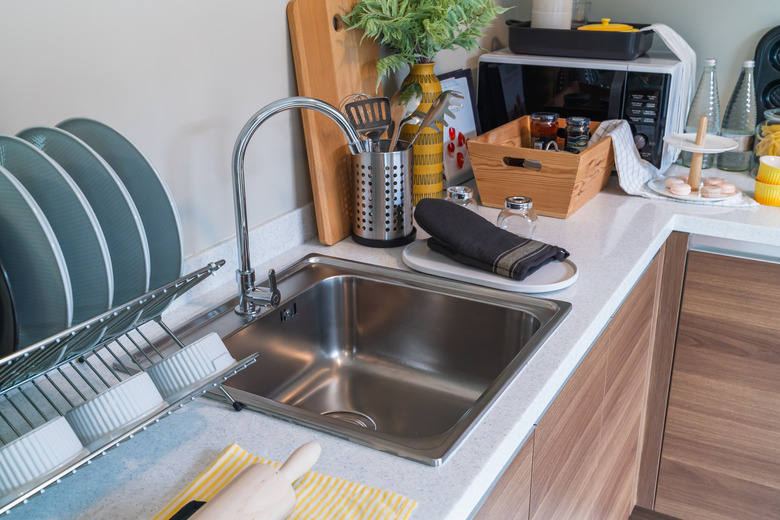Differences Between Kitchen & Laundry Faucets
Kitchen and laundry faucets probably have more similarities than they do differences. If you wanted to replace your failing laundry faucet with the one from the kitchen and update the kitchen one, you could probably do it. The only proviso is that the laundry sink has the requisite number of holes with the proper spacing.
It's true, however, that kitchen and laundry faucets serve different purposes, so there are a few key differences between them. Style and design are more of an issue in the kitchen than the laundry room, so kitchen faucets tend to be sleeker, more stylish and more expensive. Moreover, kitchen faucets come with add-ons that you don't need in the laundry room, such as sprayers and soap dispensers.
Laundry Faucets Tend to Be More Utilitarian
Laundry Faucets Tend to Be More Utilitarian
Internally, laundry faucets and utility room sink taps are more basic than kitchen faucets, usually employing compression valves rather than cartridge or ball valves. Compression valves aren't mixing valves, so any laundry faucet that delivers both hot and cold water needs two handles. Kitchen faucets often employ mixing valves and need only a single handle, which is a convenience in the kitchen. Many models have a pull-down spout, which is great for cleaning dishes but unnecessary in the laundry room. The best-quality faucets for both kitchen and laundry sink have solid brass construction.
The Differences Between a Kitchen and Laundry Faucet Aerator
The Differences Between a Kitchen and Laundry Faucet Aerator
Like that of many kitchen faucets, the spout of a laundry faucet usually reaches to the mid-point of the sink, and it swivels so that water can reach every corner of the sink. The end of the spout, however, often has external hose threads, which allows you to screw on a garden hose. The spout of a kitchen faucet, on the other hand, is usually threaded on the inside.
Because of this difference, the aerator you use for a kitchen faucet won't work on the laundry faucet. An aerator is more important in the kitchen than in the laundry, however, and many people simply leave it off the laundry faucet. If you want to put an aerator on your laundry faucet, you need one with a female hose thread connector, but for the kitchen, you need one with male threads.
Utility Room Sink Taps Can Have a 4-Inch Spread
Utility Room Sink Taps Can Have a 4-Inch Spread
Some kitchen faucets require a single hole in the sink deck or countertop, but others require two or three (not counting a hole for a sprayer). The standard spacing between the outermost of these holes is 8 inches, and the posts of the faucet have the same spacing. You might find laundry sinks with a similar hole arrangement, but it's also common to find a 4-inch spread, which is standard on bathroom sinks.
If you're thinking of transferring your kitchen faucet to the laundry room, you need to measure the hole spread, unless the faucet you want to transfer is a single-hole model. If the spread on the laundry sink is 4 inches, your 2- or 3-post kitchen faucet won't work. However, if you've been thinking of replacing your bathroom faucet, you could install it on the laundry sink.
